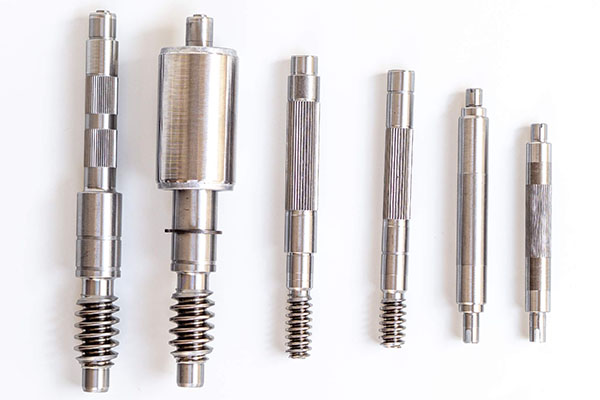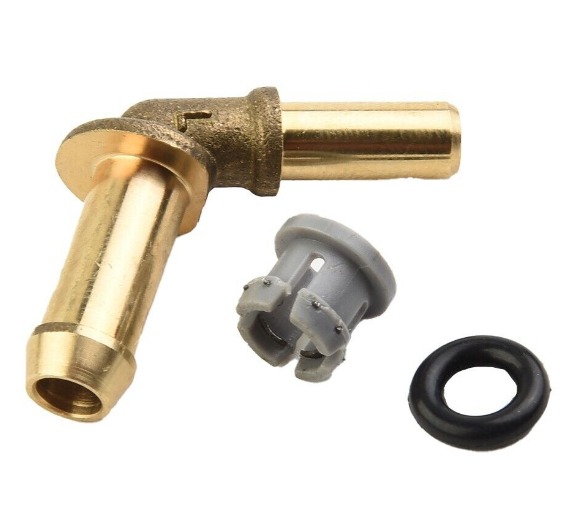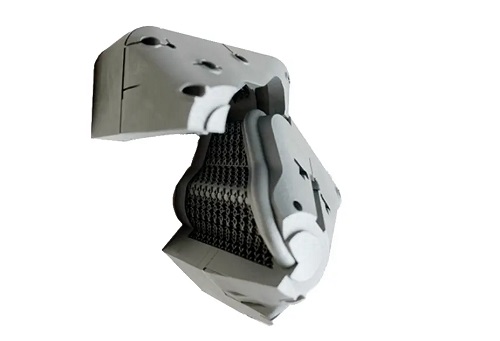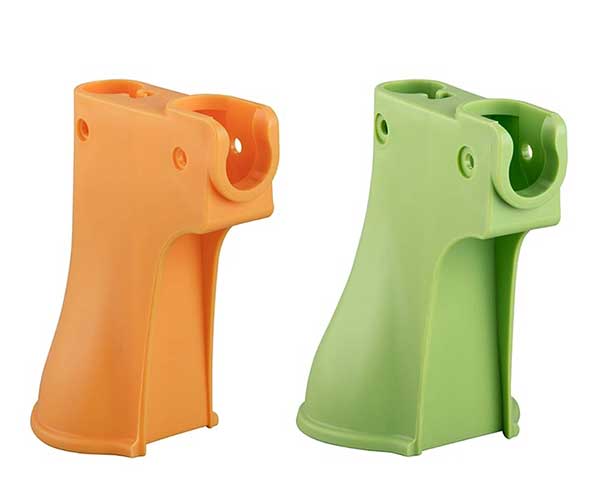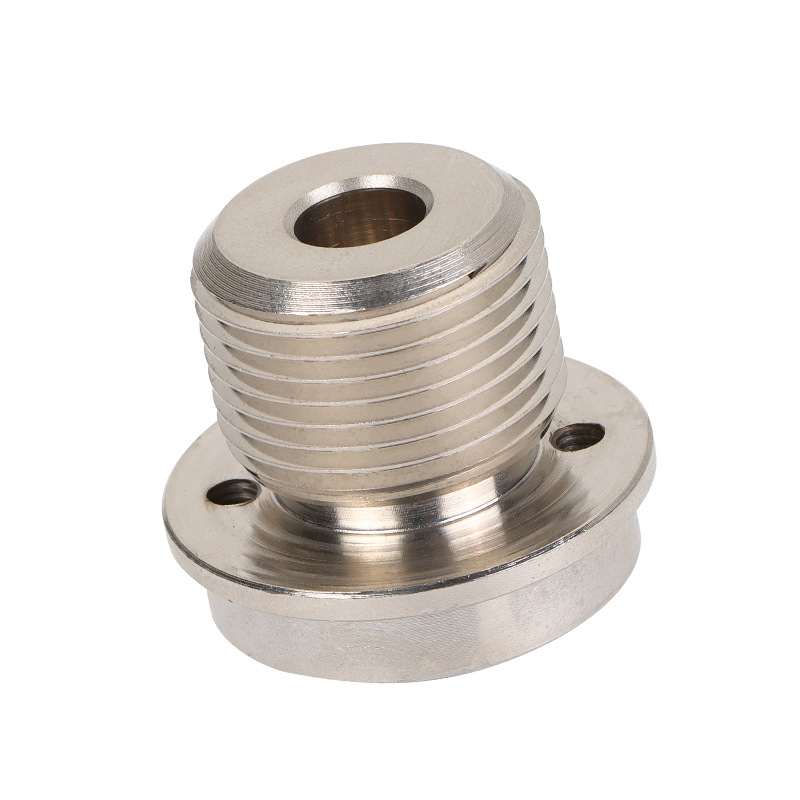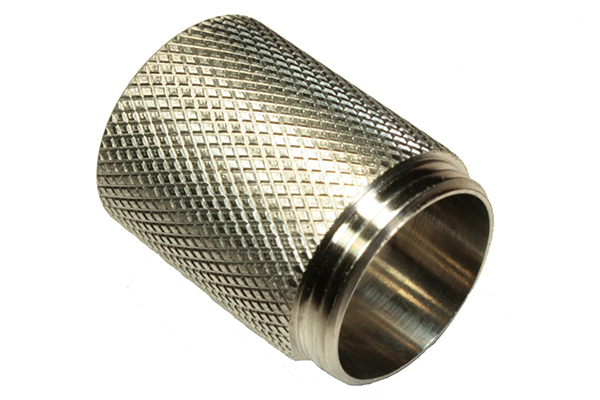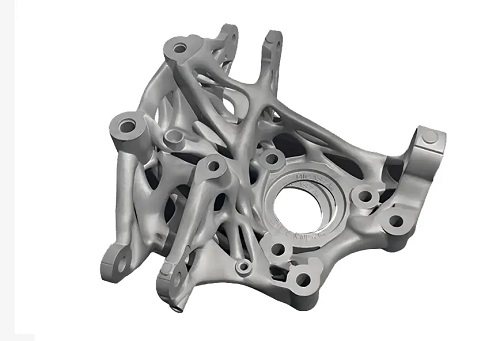Manufacturers across industries struggle with a common challenge: applying protective coatings to parts with intricate shapes, blind holes, or sharp edges. Traditional electroplating often fails here—its reliance on electrical current leads to uneven thickness, with thicker deposits on edges and thinner (or no) coverage in recesses. A gear with a keyway might corrode in the unplated crevice, a medical instrument’s intricate joint could wear prematurely, or an aerospace fastener’s threads might lack sufficient protection. What’s needed is a plating method that delivers consistent thickness and performance, regardless of geometry. This is where surface treatment electroless nickel plating excels. By using a chemical reaction instead of electricity, it deposits uniform nickel layers on even the most complex parts—solving these critical challenges with reliability. In this guide, we’ll explore how electroless nickel plating works, its process, properties, and applications across industries.
Introduction to Electroless Nickel Plating
Electroless nickel plating is a unique surface treatment that uses a chemical reaction to deposit a uniform nickel alloy coating without electrical current:
- Definition: Electroless nickel plating is an autocatalytic process where a nickel-phosphorus (or nickel-boron) alloy is deposited onto a substrate by reducing nickel ions in a chemical solution. The reaction is self-sustaining, requiring no external power source, and produces a coating with consistent thickness across all surfaces.
- Historical background: The process was discovered in the 1940s by Abner Brenner and Grace Riddell at the National Bureau of Standards. Early applications focused on military and aerospace parts, but by the 1970s, it gained widespread industrial use. Today, the global electroless nickel market exceeds $2 billion, driven by demand for corrosion and wear resistance.
- Basic principles: The process relies on a reducing agent (usually sodium hypophosphite) in the plating solution to donate electrons, reducing nickel ions (Ni²⁺) to metallic nickel (Ni⁰) on the substrate surface. The reaction is autocatalytic—once initiated, the deposited nickel acts as a catalyst to continue the reaction, ensuring continuous, uniform coating growth.
- Chemical reactions: The core reaction for nickel-phosphorus plating is: 2Ni²⁺ + NaH₂PO₂ + 2H₂O → 2Ni⁰ + H₃PO₃ + Na⁺ + 3H⁺. Phosphorus from the hypophosphite is codeposited, resulting in a nickel-phosphorus alloy with 2-15% phosphorus content, which determines the coating’s properties.
- Industrial significance: Electroless nickel plating solves critical issues in manufacturing—its uniform thickness eliminates edge buildup, making it ideal for tight-tolerance parts. It extends component life by 3-5x in corrosive environments and reduces friction, improving efficiency in moving parts like gears and bearings.
- Environmental considerations: Modern electroless nickel solutions use low-toxicity chemicals, and wastewater is treated to recover nickel (up to 95% recycling) using ion exchange or precipitation. This reduces heavy metal waste by 80% compared to older formulations, complying with EPA and REACH regulations.
- Comparison with electroplating: Electroless nickel offers distinct advantages:
| Feature | Electroless Nickel Plating | Electroplating |
| Thickness Uniformity | Excellent (±5%) | Poor (edges 2-3x thicker) |
| Coverage of Complex Shapes | Complete (blind holes, threads) | Limited (current shadowing) |
| Hardness | 400-1000 HV (heat-treated) | 150-300 HV (as-plated) |
| Corrosion Resistance | High (5000+ hours salt spray) | Moderate (1000-3000 hours) |
| Need for Electricity | None | Required |
Process of Electroless Nickel Plating
The electroless nickel plating process involves several critical steps, each ensuring adhesion, uniformity, and performance:
- Pre-treatment processes: Proper cleaning is essential for adhesion. Steps include:
- Degreasing: Alkaline cleaners or solvents remove oils and dirt.
- Acid pickling: Dilute acids (hydrochloric, sulfuric) remove oxides and rust.
- Activation: A palladium chloride or nickel chloride solution initiates the plating reaction, especially on non-catalytic substrates like aluminum or plastics.
- Conditioning: Adjusts surface chemistry to promote uniform nucleation of the nickel coating.
- Chemical solutions: The plating bath consists of:
- Nickel source (nickel sulfate or chloride, 20-40 g/L).
- Reducing agent (sodium hypophosphite, 20-40 g/L).
- Complexing agents (citric acid, lactic acid) to stabilize nickel ions.
- pH adjusters (ammonia, sodium hydroxide) to maintain pH 4-6.
- Stabilizers (lead acetate, thiourea) to prevent spontaneous decomposition of the bath.
- Autocatalytic reaction: Once the pre-treated part is immersed, the reaction starts at active sites (catalyzed by the substrate or activation layer). As nickel deposits, it catalyzes further reaction, spreading uniformly over the surface. The reaction releases hydrogen gas, which must be agitated away to prevent pitting.
- Deposition process: The bath is maintained at 85-95°C (for high-phosphorus coatings) to accelerate the reaction. Plating time (30-180 minutes) controls thickness, with a typical deposition rate of 10-15 μm per hour. Parts are suspended or rotated to ensure even exposure to the solution.
- Post-treatment processes:
- Rinsing: Deionized water removes residual chemicals to prevent staining.
- Drying: Ovens (60-100°C) remove moisture without affecting the coating.
- Heat treatment: Optional (200-400°C for 1-4 hours) to increase hardness (from 400 HV to 1000 HV) and improve adhesion via diffusion bonding.
- Temperature control: Precise heating (±1°C) is critical—higher temperatures speed deposition but increase bath decomposition risk. Thermostats and heaters maintain optimal conditions for consistent results.
- Agitation systems: Mechanical or air agitation ensures uniform solution contact, prevents concentration gradients, and removes hydrogen bubbles. This reduces defects like pinholes and ensures even thickness.
Properties of Electroless Nickel-Plated Surfaces
Electroless nickel coatings are engineered to deliver exceptional performance across key metrics:
- Uniform coating: Thickness varies by <5% across complex shapes—critical for parts with threads, blind holes, or tight clearances (e.g., hydraulic valves with 0.01 mm tolerance). This uniformity eliminates the need for post-plating machining.
- High hardness: As-plated hardness ranges from 400-600 HV (phosphorus content dependent). Heat treatment increases this to 800-1000 HV, rivaling tool steel. This hardness reduces wear in sliding components like piston rings and gears.
- Corrosion resistance: High-phosphorus coatings (>10% P) resist 5000+ hours of salt spray testing (ASTM B117) without red rust, outperforming most electroplated coatings. They protect against acids, alkalis, and saltwater, ideal for marine and chemical processing equipment.
- Wear resistance: Low friction coefficients (0.15-0.3) and high hardness reduce abrasive and adhesive wear. Tests show electroless nickel-plated bearings last 3-5x longer than uncoated ones in industrial machinery.
- Adhesion: Proper pre-treatment ensures adhesion strengths >50 N/cm² (ASTM D3359), preventing flaking even under thermal cycling (e.g., engine parts heated to 300°C) or mechanical stress (e.g., bending metal sheets).
- Dimensional accuracy: Coatings (5-50 μm thick) can be applied to tight tolerances (±1 μm), preserving part functionality. This is critical for precision instruments and aerospace components where even minor thickness changes affect performance.
- Thermal resistance: Heat-treated coatings withstand temperatures up to 400°C without losing hardness, suitable for high-heat applications like exhaust components and industrial ovens.
Applications of Electroless Nickel Plating
Electroless nickel plating solves performance challenges across diverse industries:
- Aerospace: Landing gear components, hydraulic valves, and turbine parts use electroless nickel for corrosion resistance and uniform thickness. High-phosphorus coatings protect against salt spray and jet fuel, extending maintenance intervals by 40%.
- Automotive: Engine parts (camshafts, fuel injectors), transmission components, and brake hardware benefit from wear and corrosion resistance. Electroless nickel reduces friction in piston rings, improving fuel efficiency by 2-3%.
- Medical devices: Surgical instruments, orthopedic implants, and dental tools use electroless nickel for biocompatibility (meets ISO 10993) and corrosion resistance. The smooth surface resists bacterial adhesion, enhancing safety.
- Tooling: Molds for plastic injection, die casting dies, and cutting tools use electroless nickel to reduce wear and improve release properties. This extends tool life by 2-3x and reduces downtime for reconditioning.
- Marine industry: Propellers, pumps, and underwater fasteners rely on high-phosphorus electroless nickel to resist saltwater corrosion. Coatings survive 10+ years in harsh marine environments with minimal maintenance.
- Consumer electronics: Connectors, heat sinks, and smartphone components use thin (5-10 μm) electroless nickel coatings for conductivity, corrosion resistance, and solderability. The uniform thickness ensures reliable electrical contact.
- Industrial equipment: Pumps, valves, and conveyor systems in chemical plants use electroless nickel to resist corrosive fluids. The low friction coating also reduces energy consumption in rotating equipment.
Electroless Nickel Plating Process and Equipment
Specialized equipment ensures consistent, high-quality electroless nickel coatings:
- Plating tanks: Constructed from chemical-resistant materials (PVC, polypropylene, or titanium) to withstand acidic solutions and high temperatures (85-95°C). Tanks range from 50L benchtop units to 10,000L industrial systems, with heating jackets for temperature control.
- Chemical solution systems: Automated dosing pumps maintain nickel ion, reducing agent, and pH levels within ±2% of setpoints. Filtration systems (5-10 μm) remove particulates to prevent coating defects.
- Pre-treatment equipment: Degreasing tanks (alkaline or solvent-based), pickling baths (acidic), and activation tanks (palladium chloride) are integrated into the process line. Ultrasonic cleaners (20-40 kHz) enhance cleaning of intricate parts.
- Deposition equipment: Agitation systems (mechanical stirrers or air spargers) ensure uniform solution contact. Part racks or rotating fixtures hold components to prevent shadowing and ensure 360° exposure.
- Post-treatment equipment: Rinsing tanks (counter-flow to save water), drying ovens (forced air), and heat treatment furnaces (with nitrogen atmosphere for high-phosphorus coatings) complete the process.
- Safety equipment: Acid-resistant gloves, face shields, and fume hoods protect operators from corrosive chemicals. Emergency eyewash stations and neutralizing kits (sodium bicarbonate) are mandatory.
- Quality control equipment: X-ray fluorescence (XRF) measures coating thickness (±0.1 μm), microhardness testers (Vickers) check hardness, and adhesion testers verify bond strength. Salt spray chambers (ASTM B117) evaluate corrosion resistance.
- Temperature control systems: Digital thermostats with proportional-integral-derivative (PID) control maintain bath temperature within ±1°C. Overheat protection prevents bath decomposition and hazardous reactions.
Yigu Technology’s Perspective
As a leading custom manufacturing supplier in China, Yigu Technology offers electroless nickel plating services for aerospace, automotive, and medical industries. Our capabilities include low (2-5%), medium (5-10%), and high (10-15%) phosphorus coatings, with thicknesses from 5-50 μm (±5% uniformity). We use automated systems with real-time bath monitoring and ultrasonic pre-treatment for complex parts. Our quality lab tests for thickness, hardness, and corrosion resistance, ensuring compliance with ISO 9001, AS9100, and ISO 13485. Whether plating gears, surgical tools, or marine hardware, we deliver durable, uniform coatings tailored to client needs—on time and cost-effectively.
FAQs
- What materials can be plated with electroless nickel?
Electroless nickel plating works on most metals (steel, aluminum, copper, brass) and some non-metals (plastics, ceramics) after activation. Aluminum requires zincating pre-treatment to ensure adhesion, while plastics need etching and palladium activation.
- How does phosphorus content affect coating properties?
Low-phosphorus (2-5%) coatings are harder and more wear-resistant, ideal for tooling. High-phosphorus (>10%) coatings offer superior corrosion resistance, used in marine and chemical applications. Medium-phosphorus (5-10%) balances both properties for general use.
- Is electroless nickel plating suitable for food contact applications?
Yes—electroless nickel coatings with <0.01% lead and cadmium meet FDA regulations (21 CFR 175.300) for food contact. They’re used on food processing equipment for corrosion resistance and easy cleaning.
